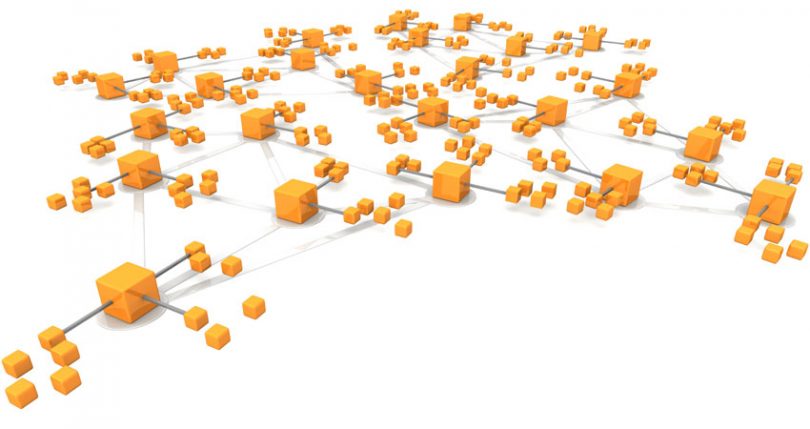When you consider the scope for enterprise blockchain consortia, there’s the potential for a significant concentration of power. So how they’re managed and controlled and hence their organizational structures are important.
So far, there’s a bit of a pattern. Most consortia gravitate towards the structure with which they’re already familiar. These arrangements include joint ventures, non-profits, software vendors as licensors, and open source foundations.
Are alternative structures considered, and if so, how do they decide? While jurisdictions and tax are major considerations, governance is a far bigger one.
What’s the consortium’s goal?
Not all consortia have the same objective, though a common aim is to share data and infrastructure to reduce costs.
The first question has to be who does the consortium benefit? In the case of trade finance consortium we.trade the group sees this as an opportunity for banks as well as for small businesses to expand cross-border trade or try it for the first time.
As it readied for launch, we.trade incorporated as a joint venture in Ireland, with the nine founding banks as shareholders.
A few questions
We.trade is used here purely as an illustrative example, and the questions below are hypothetical not based on interviews.
Should one set of participants benefit more than others? Particularly, should consortium founders benefit more than late adopters? And what does benefit mean? The issue is a matter of both ownership and control.
Do the founder shareholders benefit from SaaS profits? If so, late adopters will have concerns that their competitors control the price of a critical piece of infrastructure.
Even if the aim is to reinvest software profits in development, from a control point of view, late adopters may believe they won’t have a significant say in the development roadmap. They may think they’ll lack the ability to customize the software.
Who decides who can join? We.trade is keen to expand geographically. But once they have one or two banks in each country, outsiders might question if they’d have the same appetite for expansion.
What about other parties? Other major players in trade finance are insurers. How do they participate? In most industries there are stakeholders beyond the core companies.
What about startups? If a fintech came along and wanted to use we.trade would it be encouraged or discouraged?
Structure, signalling and trust
A primary goal of blockchain and DLT is de-centralization which reduces the need for trust. A joint venture (JV) is just a bigger centralized organization. A lot of the non-founder questions will boil down to trust or a lack thereof.
Perhaps a joint venture signals that the founding members are in the driving seat.
One solution is to allow new shareholders. With private companies that’s cumbersome. Plus there’s also the valid desire not to have too many decision makers.
Startups run into these same issues. Mark Zuckerberg’s Facebook shares have ten votes per share. Uber’s Travis Kalanick controlled the appointment of two board seats apart from his own.
Perhaps a joint stock structure is too rigid for something as fluid as a consortium.
The open source option
At last week’s Techcrunch Blockchain Series in Zug, Hyperledger’s Brian Behlendorf spoke about open sourcing a library for trade finance.
It just so happens that IBM is the technology partner for we.trade and a Hyperledger member.
Open source may reduce some of the trust issues for non-founders, but it doesn’t solve all the organizational problems. These include that enterprises need support, the solution may require marketing, someone needs to drive the project and is it ‘fair’ to the founding members.
Hyperledger is part of the Linux Foundation which has two significant examples where a company structure drives the open source software: publicly-listed Red Hat, and private Canonical in the case of Ubuntu.
The Enterprise Ethereum Alliance and Hyperledger will continue to make significant contributions in the space, but they aren’t the entire answer.
Software companies
When you set out these organizational requirements, there’s an obvious structure that solves precisely these kinds of problems: technology companies such as IBM, SAP, Oracle and in banking Finastra.
IBM has already put its stake in the ground with the joint ventures for trade with Maersk and Deutsche Bahn for mobility.
In the era since the Dotcom bubble, there’s been a massive centralization of power in Facebook, Amazon, Apple, and Google. And perhaps more so in China with Baidu, Alibaba and Tencent. There’s a similar or greater potential to create scale with enterprise consortia. So enterprises may be reticent to cede their industries to tech giants.
Also, there’s a risk that software companies may introduce a higher degree of centralization than desired. Plus there are still trust issues. For example, Intel chips contain a backdoor that doesn’t use your operating system, so anti-virus provides zero protection. Most people were oblivious for a very long time.
And if you look at the questions applied to we.trade, many of these questions are relevant to a software company solution.
IBMs JV strategy still has strategic merit. If the JVs morph into other structures, which they may have to, IBM at a minimum is likely to be lead technology partner.
Co-operatives and mutuals
Co-operatives and mutuals are a potential solution. There’s a global set of principles, many of which fit the bill for some consortia:
- Voluntary and open membership
- Democratic member control
- Member economic participation
- Autonomy and independence
- Education, training, and information
- Co-operation among co-operatives
- Concern for Community
In the UK the Myners Report looked at corporate governance and made an interesting comment about the role of co-operative directors. “They should also bear in mind that the nature of a membership interest in a co-operative (like any mutual organization) is primarily an interest as a customer or user of its services, and secondarily an interest as an owner.”
The main difference between a co-operative and a mutual is with co-operatives the members often contribute capital. With mutuals, the members are usually customers and don’t provide capital.
While mutuals look worthy of consideration, there was a trend in the 1990s for many significant insurers to de-mutualize. A big driver was regulatory Solvency requirements, and mutuals often have trouble raising capital.
Decentralized Autonomous Organizations
A Decentralized Autonomous Organization (DAO) is an organization where the governance is set out in rules embodied in computer code. That code takes the form of a smart contract on a blockchain.
DAOs are the modern day mutuals with the funding issue theoretically resolved by ICOs and tokens.
While this seems somewhat risqué for enterprises, it’s getting attention in places that may surprise you. Back in 2016, England’s Institute of Chartered Accountants published a report about the future of enterprise that talked about blockchain-based decentralized organizations without using the term DAO.
“Large-scale associations or networks of this kind would, no doubt, face many challenges; the different and ever-changing interests of participants could become very complex, like a living organism with an infinite number of cells that fade away and are renewed in an ongoing process.”
From the outset, consortia need to consider how they might grow and morph into one of these organic structures. A mature consortium is likely to resemble a public blockchain.
Two weeks ago Malta passed groundbreaking legislation that recognizes a DAO as an organizational structure. Though the EU banking regulator also shone a spotlight on some of Malta’s significant transgressions.
Ten days ago the UK Financial Conduct Authority welcomed a DAO project to its regulatory sandbox. The Natwest run project was described as a “Governance model based on DLT that enables organisations to work collaboratively on developing and running decentralised applications. The model codifies society rules in smart contracts on a blockchain creating a digital mutual. NatWest will open source the code after successful testing.”
The need for experimentation
The recent launch of the EOS cryptocurrency protocol highlighted some of the significant shortcomings of experimenting with new governance protocols at scale. There’s a strong case that public blockchains aren’t ready for them.
That’s in part because there isn’t an on-off switch for trust. For something like EOS, token holders have put down real money, and the level of trust is poor.
There’s a common misconception that a public blockchain can be completely trustless. Nick Szabo, the inventor of the smart contract concept, said: “There is no such thing as a fully trustless institution or technology.”
He points to the risk of centralization of blockchains. Nowadays three or four mining syndicates control more than 50% of Ethereum and Bitcoin servers. Trust is based on the assumption that miners will continue to behave appropriately.
The recent trend in startup strategy is to launch a minimum viable product and to iterate quickly, especially while the customer base is small. With public blockchains, software changes are intended to be very infrequent. With permissioned blockchains, changes aren’t easy, but upgrades are far more regular than public blockchains.
The concept of a DAO certainly needs experimentation. It makes far more sense to initially iterate with a smaller number of participants who have some degree of trust amongst them. This sounds somewhat like a consortium.
So one option for consortia is that existing co-operative or mutual legal structures can provide current legal certainty. But with the flexibility to experiment and potentially morph into a new legal structure when DAO legislation becomes more widely available.
The aim is both to provide for future growth but also to dispel the impression that a consortium is a cartel.






